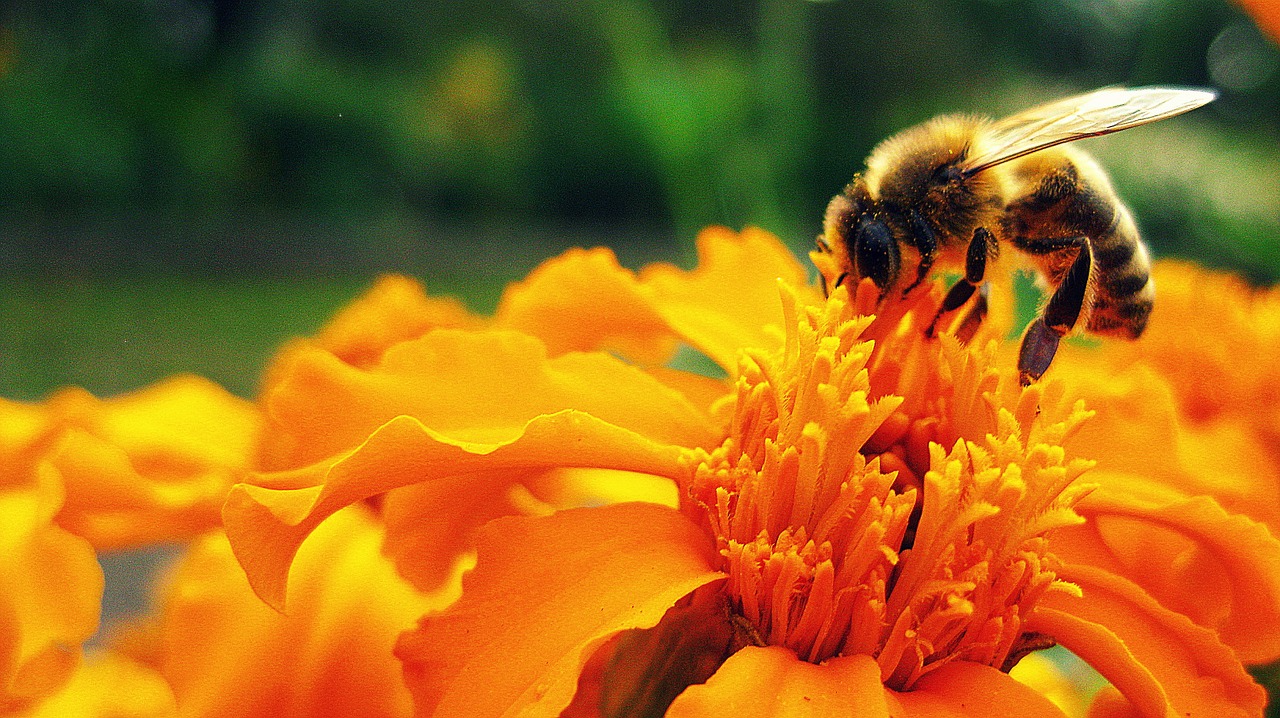The forager bee regurgitates the nectar into the mouth of a worker bee in the hive. The worker bee, adds more enzymes to the nectar to break down the complex sugar in it to simple sugar. To allow for reduced moisture content, the worker bees keep transferring the nectar from one individual to another allowing for evaporation when exposed to air thereby reducing the water content of the nectar from about 80% water to about 17% to 20% water which we see in honey.
Once the nectar thickens, they are deposited into hexagon-shaped cells. They continue to dehydrate the nectar by fanning their wings to create airflow within the hive so the evaporation process is increased and the honey is ripened. The honey at its best is thick, syrupy, and resistant to spoilage. When the honey is made, the bee seals it with wax to keep it safe. The purpose of keeping the honey is for it to be eaten during seasons when nectar is scarce.
To make a pound of honey, the bee will have to visit about 2 million flowers and a single worker bee might be able to produce only about 1/12 of a tablespoon of honey. Raw honey hasn't been pasteurized so it would still contain pollen, enzymes, and bee glue.
Honey has been proven to have antibacterial properties and even modern skincare use it in their products. Honey today is both food, medicine, and sweetness. It is a product of biology, chemistry, geography and small things that become big.
Reference
https://www.sciencedirect.com/topics/agricultural-and-biological-sciences/honey-bee-colonies https://canr.udel.edu/maarec/honey-bee-biology/the-colony-and-its-organization/ https://www.cprcertified.com/making-honey-from-flowers-a-guide-to-bees https://honey.com/about-honey/how-honey-is-made https://www.sciencedirect.com/science/article/pii/S1319562X20304952 https://pmc.ncbi.nlm.nih.gov/articles/PMC3609166/ https://www.intechopen.com/chapters/1159025
